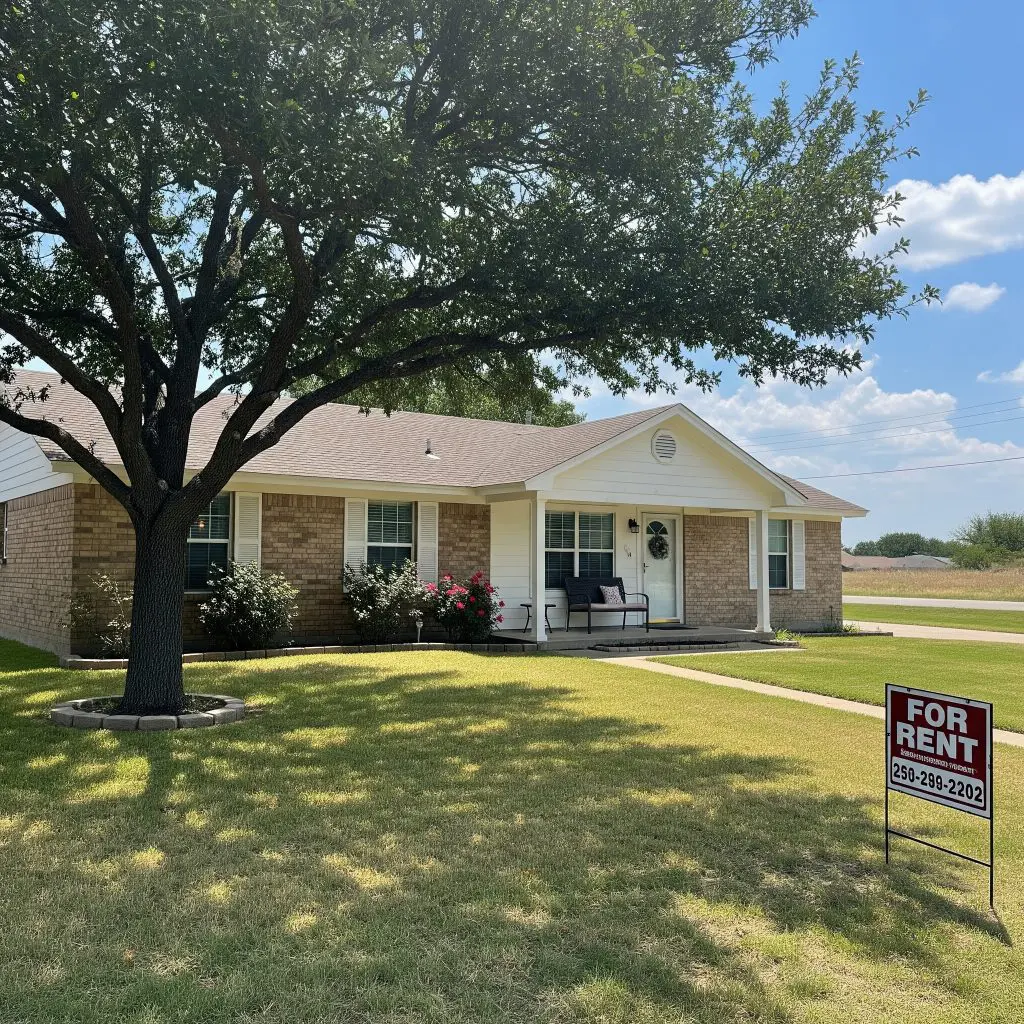What is Cost Segregation and How Does It Save Investors Money?
Dallas – October 3, 2025: When investing in real estate, one of the most powerful tools for increasing cash flow and reducing tax liability is cost segregation. For Texas real estate investors — whether you own multifamily units in Dallas (75201), retail centers in Houston (77002), or short-term rentals in Austin (78701) — understanding cost segregation could mean the difference between average returns and exceptional portfolio growth.
- What is Cost Segregation and How Does It Save Investors Money?
- What is Cost Segregation?
- Example of Cost Segregation in Action
- How Cost Segregation Saves Investors Money
- Current Market Insights for Texas Investors (as of October 2025)
- Geo-Targeting: Where Cost Segregation Pays Off in Texas
- External Resources for Texas Investors
- Q&A: Cost Segregation for Texas Real Estate Investors
- Why GHC Funding is the Go-To Lender for Texas Investors
- Final Thoughts
- Call to Action
- Get DSCR loan in Texas.
- Download Cost Segregation Savings Checklist (PDF)
This guide explains what cost segregation is, how it works, and why it can save investors significant money, while also showing how strategic financing through GHC Funding enhances the benefits.
Cost Segregation and Saving Money
- What is Cost Segregation?
- Example of Cost Segregation in Action
- How Cost Segregation Saves Investors Money
- Current Market Insights for Texas Investors (as of October 2025)
- Geo-Targeting: Where Cost Segregation Pays Off in Texas
- External Resources for Texas Investors
- Q&A: Cost Segregation for Texas Real Estate Investors
- Why GHC Funding is the Go-To Lender for Texas Investors
- Final Thoughts
- Call to Action
- Get DSCR loan in Texas.
- Download Cost Segregation Savings Checklist (PDF)
What is Cost Segregation?
Cost segregation is a tax strategy that accelerates depreciation deductions on commercial and investment real estate. Normally, the IRS requires you to depreciate residential rental property over 27.5 years and commercial property over 39 years.
Need capital? GHC Funding offers flexible funding solutions to support your business growth or real estate projects. Discover fast, reliable financing options today!
⚡ Key Flexible Funding Options:
GHC Funding everages financing types that prioritize asset value and cash flow over lengthy financial history checks:
DSCR Rental Loan
- No tax returns required
- Qualify using rental income (DSCR-based)
- Fast closings ~3–4 weeks
SBA 7(a) Loan
- Lower down payments vs banks
- Long amortization improves cash flow
- Good if your business occupies 51%+
Bridge Loan
- Close quickly — move on opportunities
- Flexible underwriting
- Great for value-add or transitional assets
SBA 504 Loan
- Low fixed rates through CDC portion
- Great for construction, expansion, fixed assets
- Often lower down payment than bank loans
🌐 Learn More
For details on GHC Funding's specific products and to start an application, please visit our homepage:

Through a cost segregation study, building components such as fixtures, flooring, HVAC, or landscaping are identified and reclassified into shorter depreciation periods — typically 5, 7, or 15 years.
This allows investors to claim much larger depreciation expenses upfront, significantly reducing taxable income in the early years of ownership.

Example of Cost Segregation in Action
Imagine you buy a multifamily property in Houston for $2 million.
- Without cost segregation: You depreciate $2M over 27.5 years = ~$72,700 per year.
- With cost segregation: A study reclassifies $500,000 into 5-, 7-, and 15-year property. Year one deductions can exceed $150,000–$200,000, cutting taxable income and boosting cash flow.
How Cost Segregation Saves Investors Money
- Accelerated Depreciation = Bigger Tax Deductions
Larger deductions in the early years free up cash to reinvest. - Improved Cash Flow
Less tax liability means more cash on hand to pay down debt, fund renovations, or acquire new properties. - Supports Refinancing Strategies
When paired with DSCR loans, SBA 504 loans, or bridge loans from GHC Funding, investors can maximize leverage without giving up liquidity. - Bonus Depreciation
Under current tax law, eligible assets can qualify for 100% bonus depreciation, supercharging the benefits of cost segregation. - Offset Active Income (with Professional Status)
Investors with “real estate professional” tax status may use cost segregation deductions to offset active income.
Current Market Insights for Texas Investors (as of October 2025)
Interest Rates:
- DSCR Loans: 6.25% – 8.75%
- SBA 7a Loans: Prime + 2.75% (~11.25%)
- SBA 504 Loans: 6.75% – 7.5% fixed
- Bridge Loans: 9% – 11%
Requirements:
- DSCR Ratio: 1.0–1.25 minimum
- LTVs: Up to 80%
- Property Types: Multifamily, retail, office, industrial, and SFR rentals
- Ownership: LLCs, corporations, and trusts allowed
The Ultimate DSCR Loan for Rental Property Quiz

Are you looking to expand your real estate investment portfolio? A DSCR loan might be the perfect tool to help you achieve your goals without relying on traditional income documentation. Test your knowledge with this quiz to see if you're ready to master the intricacies of a DSCR loan for rental property.
Geo-Targeting: Where Cost Segregation Pays Off in Texas
- Dallas (75201, 75219): Strong commercial market, ideal for cost segregation on office buildings.
- Houston (77002, 77056): Multifamily and retail assets benefit from accelerated depreciation.
- Austin (78701, 78704): High-value short-term rentals and mixed-use properties yield strong tax offsets.
- San Antonio (78205, 78209): Growing rental market with opportunities for tax planning.
- Fort Worth (76102, 76107): Industrial and logistics assets are prime candidates for cost segregation studies.
External Resources for Texas Investors
- Texas Real Estate Commission (TREC) – Licensing and regulatory compliance
- Texas Comptroller of Public Accounts – State tax rules and resources
- Texas Association of Realtors – Market insights and investor tools
- Dallas-Fort Worth Real Estate Investment Association – Networking and education
- Houston Association of Realtors – Local market statistics and data
Quiz on Texas Rental Property Laws

Test your knowledge of the regulations and legal considerations for managing a Texas rental property. From security deposits to eviction notices, this quiz will help you understand the key responsibilities of landlords in the Lone Star State.
Q&A: Cost Segregation for Texas Real Estate Investors
Q1: How much does a cost segregation study cost?
A: Typically $5,000–$15,000 depending on property size, but the tax savings usually outweigh the cost many times over.
Q2: Can I do cost segregation on a single-family rental?
A: Yes, but the benefits are most pronounced with larger multifamily or commercial assets.
Q3: Does cost segregation increase audit risk?
A: Not if conducted by a qualified firm. The IRS recognizes and accepts properly documented cost segregation studies.
Q4: Can cost segregation help if I plan to sell soon?
A: Yes, but depreciation recapture applies. Pairing with a 1031 exchange can defer taxes.
Q5: Is bonus depreciation still available in 2025?
A: Yes, though current law phases it down; always confirm with a CPA for the latest updates.
Q6: How does GHC Funding help with cost segregation strategies?
A: By offering DSCR loans and SBA financing, GHC Funding helps you extract equity and scale investments while maximizing tax efficiency.
Q7: Do Texas Opportunity Zones work with cost segregation?
A: Yes — combining both strategies can supercharge long-term tax benefits.
Why GHC Funding is the Go-To Lender for Texas Investors
- Flexible Loan Programs: DSCR, SBA 7a/504, bridge loans.
- No Income Verification: DSCR loans based on rental performance, not tax returns.
- Entity-Friendly: Supports LLCs and corporations for maximum asset protection.
- Market Knowledge: Expertise in Texas real estate, from Houston to Austin.
Test Your Texas Investor Savvy!

Texas, the Lone Star State, is a land of vast opportunities, from its booming urban centers to its sprawling energy fields. For real estate investors, Texas offers a dynamic market driven by continuous population growth, diverse industries, and a business-friendly environment. Whether you're considering your first venture into investment properties using no income verification rental property loans for new investors or expanding an existing portfolio, understanding the Texas landscape is invaluable.
Put your knowledge of the Lone Star State to the test with our quick quiz!
Final Thoughts
Understanding what cost segregation is and how it saves investors money is a game-changer for Texas real estate investors. By accelerating depreciation, improving cash flow, and strategically reinvesting tax savings, investors can grow portfolios faster and smarter.
When combined with financing solutions from GHC Funding, the benefits multiply — making it possible to scale while keeping tax obligations under control.
Call to Action
👉 Ready to save money with cost segregation and strategic financing?
Visit GHC Funding or call 833-572-4327 today to explore DSCR loans, SBA financing, bridge loans, and more tailored to Texas real estate investors.
Get DSCR loan in Texas.
Download Cost Segregation Savings Checklist (PDF)
Get a No Obligation Quote Today.
Use these trusted resources to grow and manage your small business—then connect with GHC Funding
to explore financing options tailored to your needs.
GHC Funding helps entrepreneurs secure working capital, equipment financing, real estate loans,
and more—start your funding conversation today.
Helpful Small Business Resources

